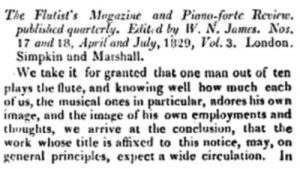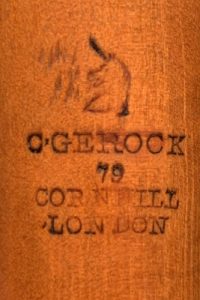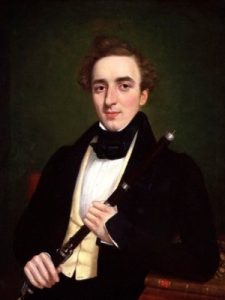Bate, Philip. The Flute: A Study of its History, Development, and Construction. London: Ernest Benn, 1969.
Baines, Anthony. Woodwind Instruments and their History. New York: Norton, 1962.
Bigio, Robert. Rudall, Rose & Carte: The Art of the Flute in Britain. London: Tony Bingham, 2011.
Boehm, Theobald. The Flute and Flute-Playing. Translated by Dayton C. Miller. New York: McGinnis & Marx, 1960.
Bowers, Jane. “New Light on the Development of the Transverse Flute Between About 1650 and About 1770.” Journal of the American Musical Instrument Society 3 (1977): 5–56.
Carte, Richard. Sketch of the Successive Improvements Made in the Flute. In Readings in the History of the Flute, edited by Robert Bigio, 207–35. London: Tony Bingham, 2006.
Chang, Lidia. “‘The Don Giovanni of Wind Instruments’: Flute-Playing, Masculinity, and English Nationalism in the Georgian Era.” Paper presented at the Galpin Society and American Musical Instrument Society joint Conference on Musical Instruments, Edinburgh, June 2017.
Clinton, John. A Theoretical and Practical Essay on the Boehm Flute. London: R. Cocks & Co., 1843. http://ks4.imslp.info/files/imglnks/usimg/f/fb/IMSLP454458-PMLP738642-theoreticalpract0000clin_boehm_clinton.pdf.
———. A Treatise Upon the Mechanical and General Principles of the Flute. In Readings in the History of the Flute, edited by Robert Bigio, 183–204. London: Tony Bingham, 2006.
Eagle, David William. A Constant Passion and a Constant Pursuit: A Social History of Flute-Playing in England from 1850 to 1851. PhD Dissertation, University of Minnesota, 1977. ProQuest (7809653).
The Harmonicon. Part 2. London: Samuel Leigh, 1830.
Heyde, Herbert. “Makers’ Marks on Wind Instruments. Translated by William Waterhouse. In William Waterhouse, The New Langwill Index: A Dictionary of Musical Wind-Instrument Makers and Inventors, xii–xxviii. London: Tony Bingham, 1993.
Montagu, Jeremy. The Flute. Princes Risborough, UK: Shire Publications, 1990.
Nelson, Douglas R. The Life and Works of Lamar Stringfield. PhD Dissertation, University of North Carolina Chapel Hill, 1971. ProQuest (302533210).
Powell, Ardal. The Flute. New Haven: Yale University Press, 2002.
Powell, Ardal and David Lasocki. “Bach and the Flute: The Players, the Instruments, the Music.” Early Music 23 (February 1995): 9–29.
Rockstro, R. S. A Treatise on the Construction, the History, and the Practice of the Flute. London: Musica Rara, 1967.
Spitzer, John and Neal Zaslaw. The Birth of the Orchestra: History of an Institution, 1650–1815. Oxford: Oxford University Press, 2005.
Toff, Nancy. The Development of the Modern Flute. Urbana: University of Illinois Press, 1979.
Vorhees, J. L. The Classification of Flute Fingering Systems of the Nineteenth and Twentieth Centuries. Buren, The Netherlands: F. Knuf, 1980.
Waterhouse, William. The New Langwill Index: A Dictionary of Musical Wind-Instrument Makers and Inventors. London: Tony Bingham, 1993.
Waters, Simon. “Charles Nicholson and the London Flute Market in the Early Nineteenth Century.” The Galpin Society Journal 64 (March 2011): 67–78.
Welch, Christopher. History of the Boehm Flute. New York: McGinnis & Marx, 1961.
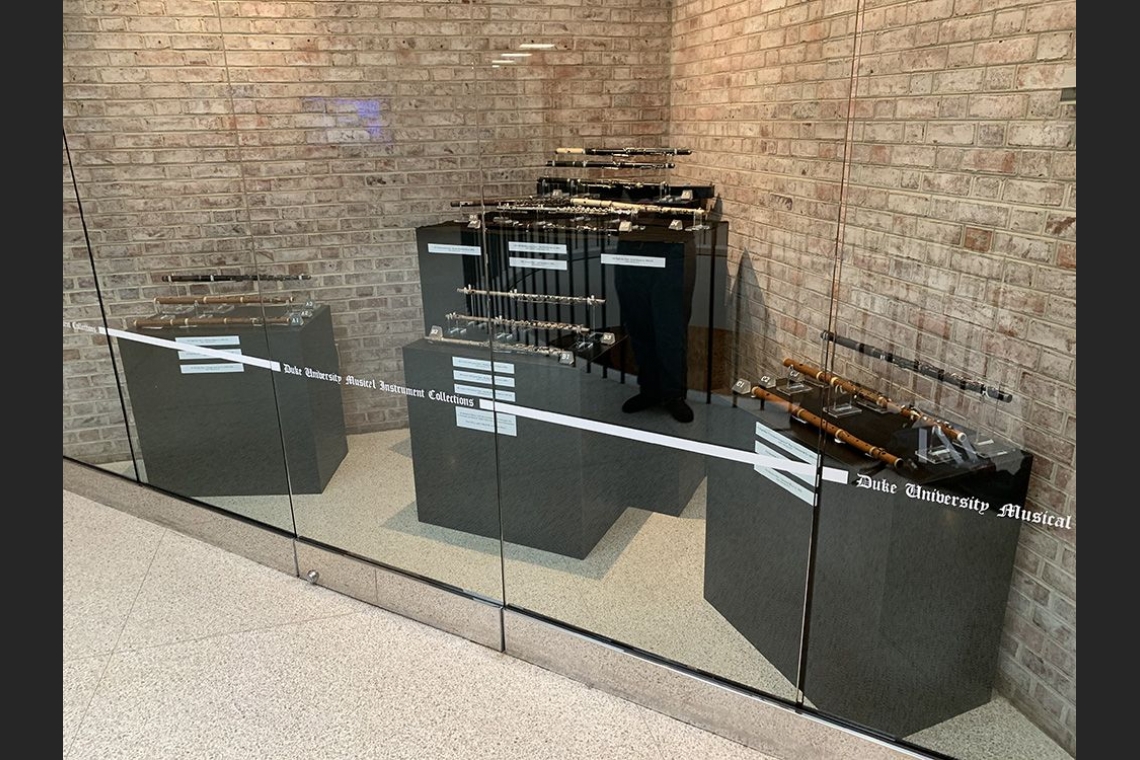
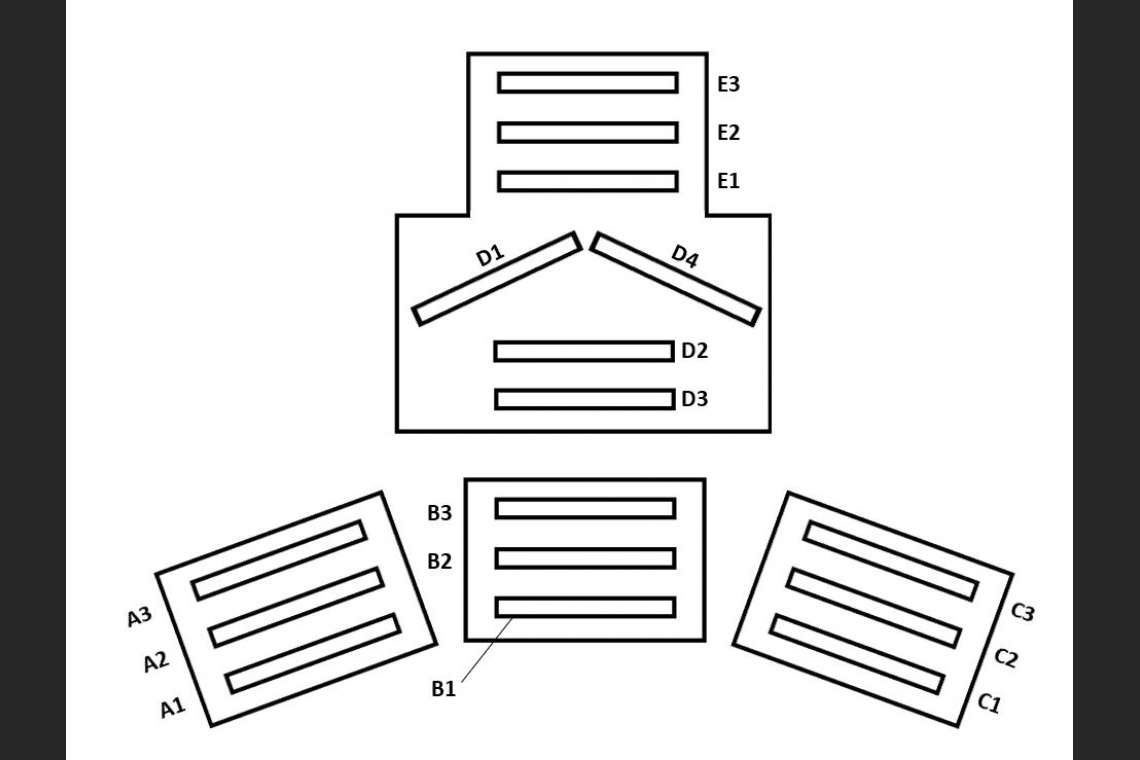

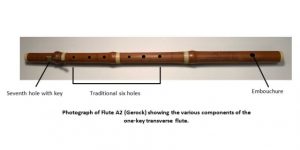 A flute can be described as a woodwind instrument, generally of a tubular shape, that is played by blowing across a specially-shaped opening (known as the embouchure) in such a way as to produce a vibrating column of air whose pulsations we hear as sound. This manner of generating sound by blowing directly across the embouchure distinguishes the flute from other woodwind instruments that produce sound through the use of one or two reeds. The embouchure may be situated either at the end of the tube, as in a recorder, or on the side of the tube, as in the modern flute. A flute whose embouchure is on the side of the tube often is referred to as a “transverse” flute because the player directs the airstream across the side of the tube.
A flute can be described as a woodwind instrument, generally of a tubular shape, that is played by blowing across a specially-shaped opening (known as the embouchure) in such a way as to produce a vibrating column of air whose pulsations we hear as sound. This manner of generating sound by blowing directly across the embouchure distinguishes the flute from other woodwind instruments that produce sound through the use of one or two reeds. The embouchure may be situated either at the end of the tube, as in a recorder, or on the side of the tube, as in the modern flute. A flute whose embouchure is on the side of the tube often is referred to as a “transverse” flute because the player directs the airstream across the side of the tube.